
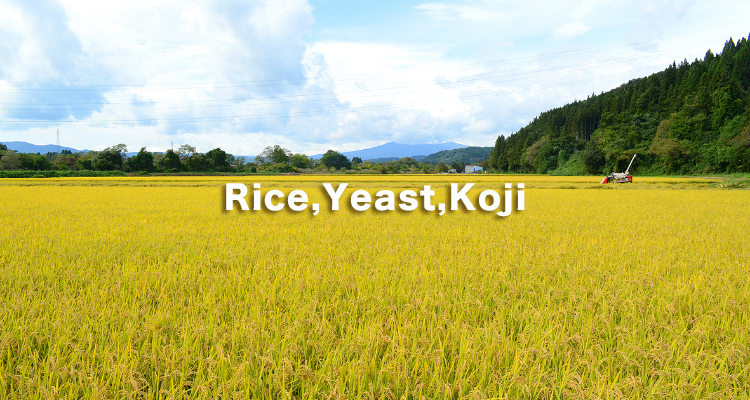
Sake rice (sake-brewing rice)
Sake rice, officially called “shuzo-kotekimai ” , is a kind of non-glutinous rice which has suitable features for sake. For sake brewing purpose, bigger grain with less protein and fat is considered that it’s suitable in order to reduce undesirable flavor. On top of that, it’s important to have shinpaku (cloudy white core) to make koji (special kinds of koji spores) easier to get into it in order to make quality koji. Aomori prefecture had developed sake rice such as ‘Kojo-nishiki’ (1968) and ‘Ho-hai’ (1977). Aomori prefectural Industrial Technology Research Center has been researching and developing quality sake rice for a long period of time. Agriculture Research Institute for cultivation propriety, Hirosaki Industrial Research Institute for brewing propriety,
Major Sake rice for Aomori Sake
‘Hana-hubuki’
‘Hana-hubuki’ is a hybrid of ‘Okuhomare’ and Hu-type 103. It has started to use in 1986, is one of the most dominant sake rice in Aomori. Since it has the largest grain of all sake rice with stable yield, it comes 11th in production amount among all kind of sake rice. It’s not suitable for higher rice-polishing rate sake such as Daiginjo because its huge core is easy to crack. It is produced at relatively warm area like around Hirosaki-city.
The King of Aomori Sake rice
‘Hana-omoi’
‘Hana-omoi’, is a hybrid of ‘Yamada-nishiki’ and ‘Hana-fubuki’. It started to utilize as major sake rice for Ginjo and Daiginjo sake at 2002. Conventionally, ‘Yamada-nishiki’ from other prefectures for Daiginjo was used. In Aomori, to use instead it to development of ‘Hana-omoi’. It has high tolerance for polishing and has clear after taste. Combined with yeast made in Aomori, it makes sake possible to be clear yet tasteful.
Maverick of Sake rice.
The Refreshing ‘Hana-sayaka’
‘Hana-sayaka’ is a mutant sake rice that found in selecting process of ‘Hana-omoi’ by chance. A hybrid of ‘Kuro1900’ and ‘Gin-ginga’. By unusual feature that it contains good amount of progluterin, protein that it’s hard to proteolyzed by koji enzyme, it has extremely low amino acid which gives sake without an undesirable flavor. ‘Hana-sayaka’ is the only commercial sake rice with this kind of feature which has been commercialized since 2014. A research shows that rice or sake less made from ‘Hana-sayaka’ contains resistant protein. The protein helps excreting metabolic decomposition product by absorbing cholesterol and fat. ‘Hana-sayaka’ can be used for bread. Mainly it is cultured in Hirosaki and Towada-city.
Cold-Resistant All-Rounder
‘Gin-eboshi’
‘Gin-eboshi’ is a hybrid of ‘Dewanosato’ and ‘Kuro2065’ with the character which high cold resistance and high disease resistance. It’s been hard for farmers to cultivate conventional sake rice around Kennan and Shimokita area because of cold strong wind called Yamase. ‘Gin-eboshi’ made it possible to cultivate sake rice at every corner of Aomori since it’s first commercial used in 2018. It can be used in basically any kind of sake with features of strong umami and refreshing flavor.
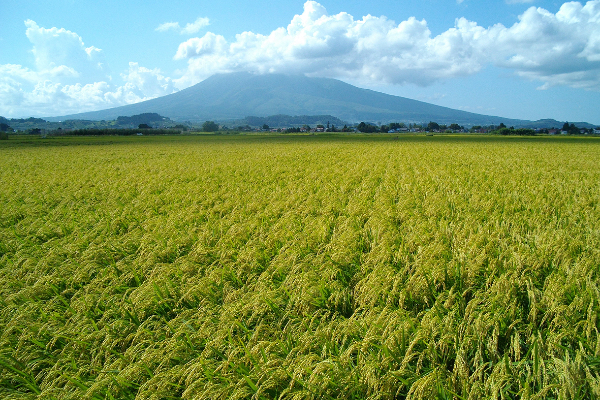
Rice field of ‘Hana-omoi’ with Mt. Iwaki
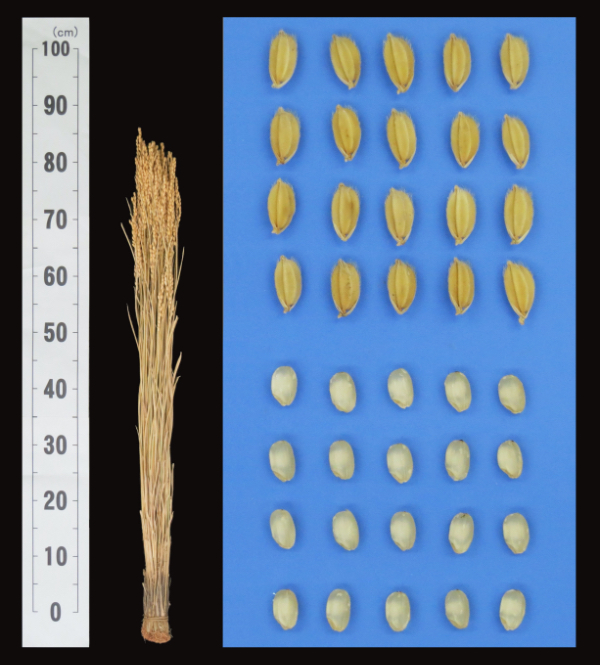
Ear, grain, polished rice of ‘Hana-hubuki’
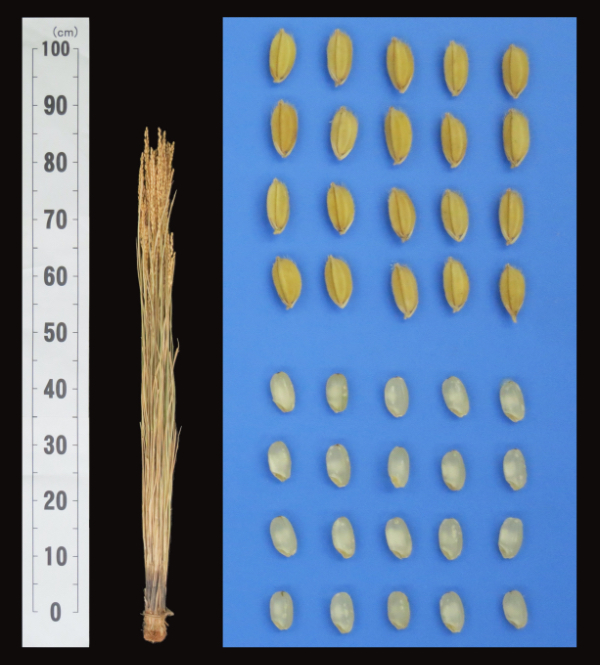
Ear, grain, polished rice of ‘Hana-omoi’
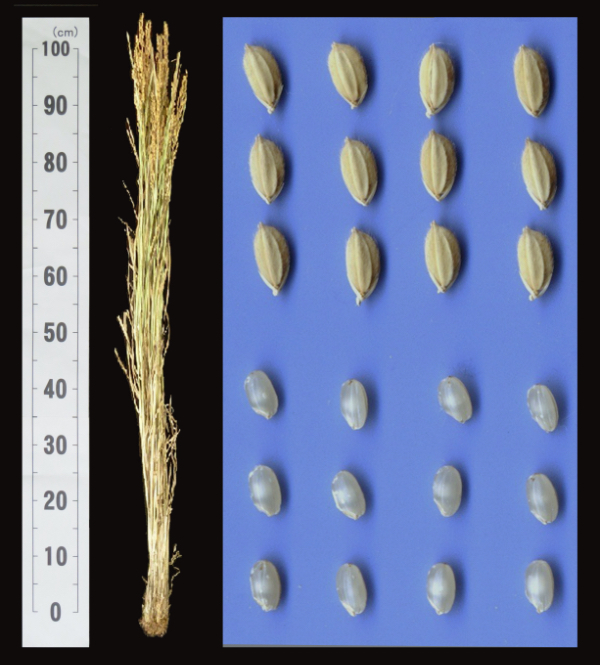
Ear, grain, polished rice of ‘Hana-sayaka’
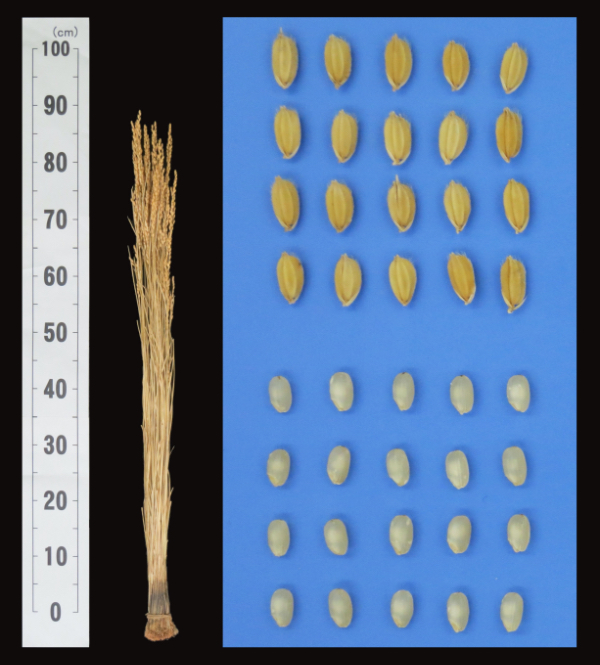
Ear, grain, polished rice of ‘Gin-eboshi’
Yeast
Yeast is a single-celled microorganism that convert sugar into alcohol. Like sake rice, Yeast also has strong impact on unique flavor and fruitiness of sake. Therefor there’s been experiments of creating / finding better yeast since Meiji era (1868 - 1912). Before Meiji era, brewers were using wild yeast called “ietsuki kobo” which supposedly inhabit naturally in each brewery. Now, it’s widely common to use cultivated yeast after Meiji era. Alongside with the development of sake rice like ‘Hana-Hubuki ‘and ‘Hana-Omoi’, Aomori prefecture had developed and commercialized 4 original yeasts and have been providing those yeasts out of Aomori since 2017.
‘Mahoroba-gin’
Alongside the birth of ‘Hana-omoi’, ‘Mahoroba-gin ‘was developed for adding floral and fruity note to Ginjo or Daiginjo. It has rich amount of Ethyl caproate (apple like aroma) with low acidity which gives floral finishing note to sake. It doesn’t make bubbles during the mashing process and has lower alcohol tolerance. Commercially used since 2003.
‘Mahoroba-jun’
Much alike ‘Mahoroba-gin’, ‘Mahoroba-jun’ is also developed alongside the birth of ‘Hana-omoi’. This yeast will give harmonized aroma of Ethyl caproate (apple like aroma) and isoamyl acetate (banana like aroma) with beautifully balanced acidity. It has higher alcohol tolerance than ‘Mahoroba-gin’. commercially used since 2003.
‘Mahoroba-kaguwa’
Much alike ‘Mahoroba-gin’ and ‘Mahoroba-jun’, ‘Mahoroba-kaguwa’ was developed alongside the birth of ‘Hana-omoi’. ‘Mohoroba-kaguwa’ has been mainly used for Junmai ginjo, daiginjo, and Junmai. With rich amount of isoamyl acetate, a banana like aroma, it makes sake with beautifully balanced acidity. ‘Mahoroba-kaguwa’ has great alcohol tolerance. The yeast is likely to live until very end of mashing process. Commercially used since 2003.
‘Mahoroba-hana’
The very first yeast designed by Aomori prefecture back in 1997. A parent strain for all ‘Mahoroba-gin’, ‘Mahoroba-jun’, and ‘Mohoroba-kaguwa’ This yeast will give harmonized aroma of Ethyl caproate (apple like aroma) and isoamyl acetate (banana like aroma) with relatively low acidity. It has high tolerance for both alcohol and low temperature.
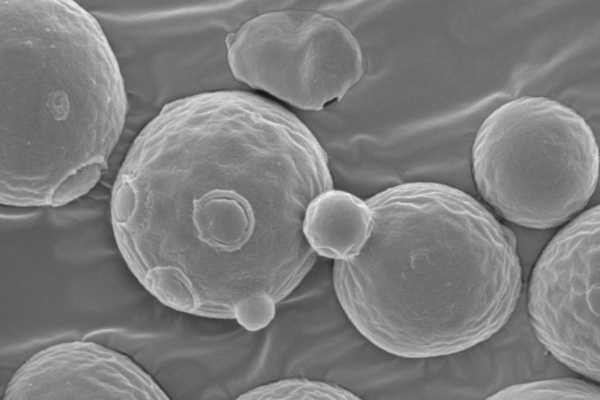
Electron microscope image of Aomori original yeast
Koji
Koji is essential for miso, soy sauce, grain vinegar, and sake. All of them are fundamental elements for Japanese cuisine and we consider Koji as “the National Fungi”. Koji has ability to produce enzyme which digest starch and protein. The amount of enzyme produced by Koji will make huge difference to sake. Development of original Koji spores has barely done by any other places except for Aomori prefecture yet sake rice and yeast are widely practiced throughout Japan. Since 2004, alongside the birth of ‘Hana-omoi’, Aomori had been developing original Koji for all Aomori produced sake.
‘Gold G’
‘Gold G’ was a selected mutant koji spores from experiment which expose normal koji spores to UV light. The ability of converting starch into glucose is outstanding and it matches perfectly with apple like aroma produced by yeast.
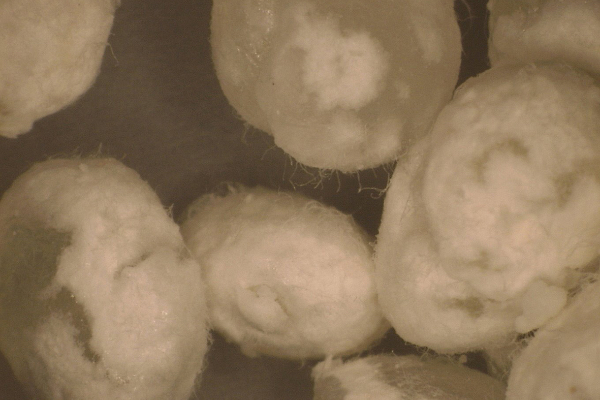
Enlarged image of rice koji covered with koji myceliums
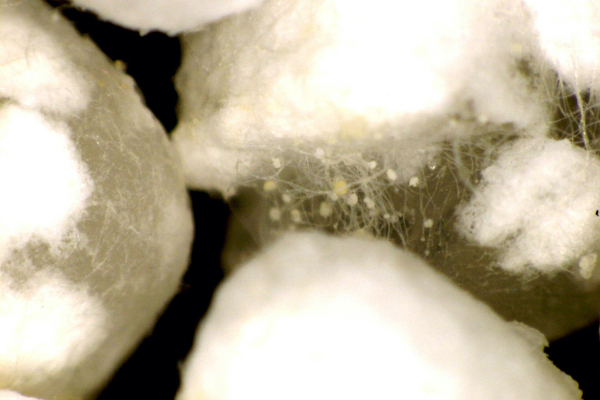
Enlarged image of rice koji biodegraded by Aomori original koji spores

